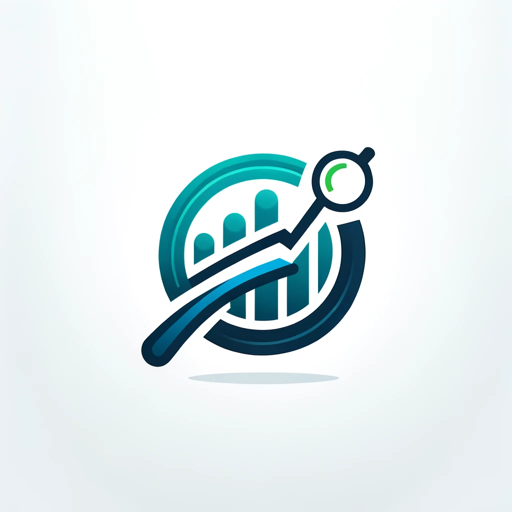Use the Top Marketing Frameworks-AI-driven marketing copy tool
AI-powered frameworks to boost campaigns
Related Tools
Load More
GTMwiz: Build your go-to-market strategy
Marketing, Sales, Customer Success, Revenue Operations, and Enablement teams now have a GTM expert as part of their team. GTMwiz uses a comprehensive, data-driven and expert proven approach trained by some of the best go-to-market leaders work and experi
Marketing GPT
Marketing GPT is an AI tool designed to streamline marketing strategy and campaign planning, providing expert insights for market analysis, strategy development, and campaign optimization across various channels.

The Marketer
Meet your personal Marketing Strategy Consultant. Trained with the expertise of the best marketers of the last decade. I will coach to to build powerful brand strategies, and apply innovative social media, ads, content and copyrighting knowledge.

Marketing Strategizer
Crafting your perfect marketing strategy.

Marketing Advice
Generates marketing strategies based on “22 Immutable Laws of Marketing.”

The 1-Page Marketing Plan
Generates 1-Page Marketing Plans in an easy-to-copy table format
20.0 / 5 (200 votes)
Introduction to Top Marketing Frameworks
Top marketing frameworks serve as structured approaches to crafting persuasive, impactful, and goal-oriented marketing messages. They are designed to guide marketers, copywriters, and business owners through the process of identifying pain points, formulating solutions, and motivating target audiences to take action. Each framework follows a specific pattern to engage the audience at different stages of the marketing funnel, such as generating awareness, creating interest, building desire, and prompting action. For instance, the PASTOR framework highlights the customer's problem, agitates it to stress its importance, and presents a clear solution. Another common framework, AIDA (Attention, Interest, Desire, Action), provides a step-by-step process to guide customers from first interaction to conversion. These frameworks can be customized and applied to various channels, such as social media, email campaigns, and product landing pages.

Key Functions of Top Marketing Frameworks
Pain-Point Identification
Example
The Problem-Agitate-Solve framework focuses on identifying the customer's most pressing problem and making them feel the urgency to find a solution.
Scenario
In a SaaS company's marketing campaign, this framework can highlight how outdated software causes inefficiencies in workflow. The copy would stress the negative impacts of not upgrading and present the company's software as the optimal solution.
Customer Engagement
Example
The Attention-Interest-Desire-Action (AIDA) model is used to hook the audience's attention with a bold headline, maintain their interest with compelling information, create a desire for the product by showcasing its benefits, and prompt action with a strong call to action.
Scenario
A fashion brand uses AIDA in a social media ad, capturing attention with a visually striking image, sparking interest by detailing sustainable materials, building desire with testimonials from influencers, and leading to action by offering a limited-time discount.
Storytelling for Emotional Connection
Example
The Star-Story-Solution framework is ideal for brands that want to build a narrative around their product, drawing customers in with a relatable character and resolving the story with the product as the hero.
Scenario
A skincare brand could use this framework by introducing a character struggling with acne. The story shows the character’s journey, ending with the use of the brand's product, which solves their issue and boosts their confidence.
Ideal Users of Top Marketing Frameworks
Marketers and Copywriters
These professionals benefit from marketing frameworks as they provide structured, tested approaches to crafting persuasive copy. Frameworks like AIDA, PASTOR, and Features-Advantages-Benefits (FAB) help streamline the writing process, ensuring the content is both engaging and aligned with marketing goals. Copywriters can rely on these frameworks to maintain consistency in messaging across different campaigns, while also adapting their strategies for various stages of the customer journey.
Small Business Owners and Entrepreneurs
Small business owners who may not have formal marketing training can benefit from marketing frameworks by simplifying complex marketing strategies into actionable steps. Frameworks like the Before-After-Bridge help entrepreneurs understand how to position their products as solutions to customer problems, making it easier to create compelling website copy, social media ads, and promotional emails. For instance, they can use frameworks to clearly articulate their unique selling proposition and drive conversions.

Steps to Use Top Marketing Frameworks
Visit aichatonline.org for a free trial without login, no need for ChatGPT Plus.
This is the first step to access a range of marketing frameworks quickly and without restrictions.
Choose the appropriate marketing framework.
Based on your specific marketing objective, select from frameworks like AIDA, PASTOR, or Features-Advantages-Benefits. Each serves different purposes, such as grabbing attention, storytelling, or highlighting product benefits.
Input your product or service details.
To optimize the framework's effectiveness, provide relevant details about your product, target audience, and their pain points.
Adjust the tone and style of copy.
Tailor the generated content to align with your brand voice and audience expectations by editing the output as needed.
Use the copy in marketing materials.
Once satisfied, apply the copy to your ads, landing pages, emails, or other marketing materials for maximum impact.
Try other advanced and practical GPTs
GPT Auto Connector: Automatically use the best GPT
AI-Powered GPT Selection for Every Task

ModelMaker for Use Cases
AI-Powered UML Diagram Creation Tool

Digital Use Case Creator
AI-powered tailored digital use cases.

Vancouver Real Estate Expert
AI-powered Vancouver real estate insights
Sport Bet Bot 2.0
AI-Powered Betting Insights

Bet Advisor
AI-powered sports betting advisor

Dr. Professor
AI-driven academic guidance for Master's success.

Algorithm Prof: General
Unlock the Power of Algorithms with AI

SAP S4/HANA General Assistant
Empowering Your SAP S4/HANA Journey with AI

Quimica General
AI-powered chemistry study assistant

General
AI-powered solutions for every task

Company Researcher
AI-Powered Company Insights at Your Fingertips

- Lead Generation
- Campaign Planning
- Brand Awareness
- Customer Retention
- Sales Funnel
Q&A on Using Top Marketing Frameworks
What are marketing frameworks and why are they important?
Marketing frameworks are structured approaches used to craft persuasive messages. They help align communication with customer needs, making it easier to capture attention, build interest, and drive action. Frameworks like AIDA, PASTOR, or Features-Advantages-Benefits guide you step-by-step in creating focused and effective campaigns.
How do I choose the right marketing framework for my campaign?
The right framework depends on your marketing goal. For awareness, the AIDA model is effective. To address pain points, the Problem-Agitate-Solution or PASTOR framework works best. Storytelling campaigns may benefit from Star-Story-Solution. Each framework focuses on different aspects of consumer persuasion.
Can I use multiple frameworks for one campaign?
Yes, combining frameworks can strengthen your message. For example, you can start with AIDA to grab attention and create interest, then use PASTOR to address pain points and drive action. Mixing frameworks ensures all aspects of the customer journey are covered.
Is there a framework for addressing customer objections?
Yes, the Five Basic Objections framework specifically addresses concerns like lack of time, money, or belief in the product. It helps you counter objections directly and reassure potential customers that your product is the right choice for them.
How can I measure the effectiveness of a marketing framework?
Track key performance indicators such as click-through rates, conversion rates, and engagement metrics. By A/B testing different frameworks or variations of your copy, you can identify which framework resonates best with your audience and yields the best results.